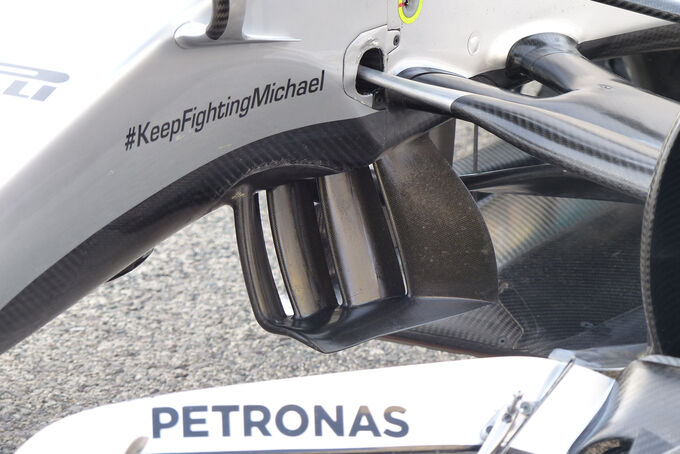- Login or Register
No account yet? Sign up
It definitely would. But you err on the safe side. Airflow with a functioning S-duct won't be worse than with a closed one. So you can check the significance of the worst possible adverse effects on the upper side airflow. If that is negligeable there is a good chance you will gain something overall.turbof1 wrote:I don't really know why they want to test the vanity panel only; wouldn't the flow be different with a real S-duct when airflow gets pushed out of it, including over the bulge?


Of course not because this part is on the car since the beginning of the saison.FrukostScones wrote:after this pic,
http://img1.auto-motor-und-sport.de/Mer ... 909829.jpg
I think it is S-duct and not visibility/monocoque testing for 2016... (AMUS is wrong I think)
Hole has been there at austrian test... and the last races anyone?

It's a test for next year's car; we are looking at tell tale signs what the car will be like then.bhall II wrote:There's no reason for an S-duct on a car like the Mercedes.
The same system can't be used for driver cooling and S Duct....simply because there are any sealing bareer in the cockpit . And air flow can't choose the right way.Matt Somers wrote:Here's my thoughts on it (rather than go into a massive post again here) http://www.somersf1.co.uk/2015/11/bite- ... -duct.html
The crux of it revolves around driver cooling, have we concluded:
A. How driver cooling is achieved with the W06 in the absence of a hole in the nose tip?
B. If we are to assume that the slot is in behind/under the nose as I have posted in that article, we have to assume this is the reasoning for the hollow lower section of the nose and the slot under the chassis/bulkhead.
C. The other option is that the small hole in the lip/chin/tongue on which the turning vanes are hung is how airflow is passed on for cooling.
D. None of the above and Merc don't cool the drivers unless they open up the hole on top of the chassis that feeds down through the steering mech hatch but, then what is the lower chassis slot for?
Bhall, I agree their nose design style doesn't conventionally need the 'S' duct but I think what we have seen shows they're not thinking conventionally and they will either change nose designs or their version is essentially more like the F2008 chassis slot. On top of this it seems pretty clear they're evaluating the chassis/nose interaction angle, especially in light of suspension geometry changes and so the duct will just marganalise a steeper inclination of the angle.
Drica wrote:I was wondering how is it possible that this years pole is a clear second slower than last years, considering all the engine performance gains and aerodynamic tweaks which should have improved the lap time, not worsen it. Could it be the air/track temperature related?
Wow, i knew that kerbs can upset the cars to a certain level, but this much...3jawchuck wrote:Drica wrote:I was wondering how is it possible that this years pole is a clear second slower than last years, considering all the engine performance gains and aerodynamic tweaks which should have improved the lap time, not worsen it. Could it be the air/track temperature related?
Maybe a small result of the environmental conditions but mostly the drivers seem to be saying the new kerbs are the defining factor.
http://www.autosport.com/news/report.php/id/121793

